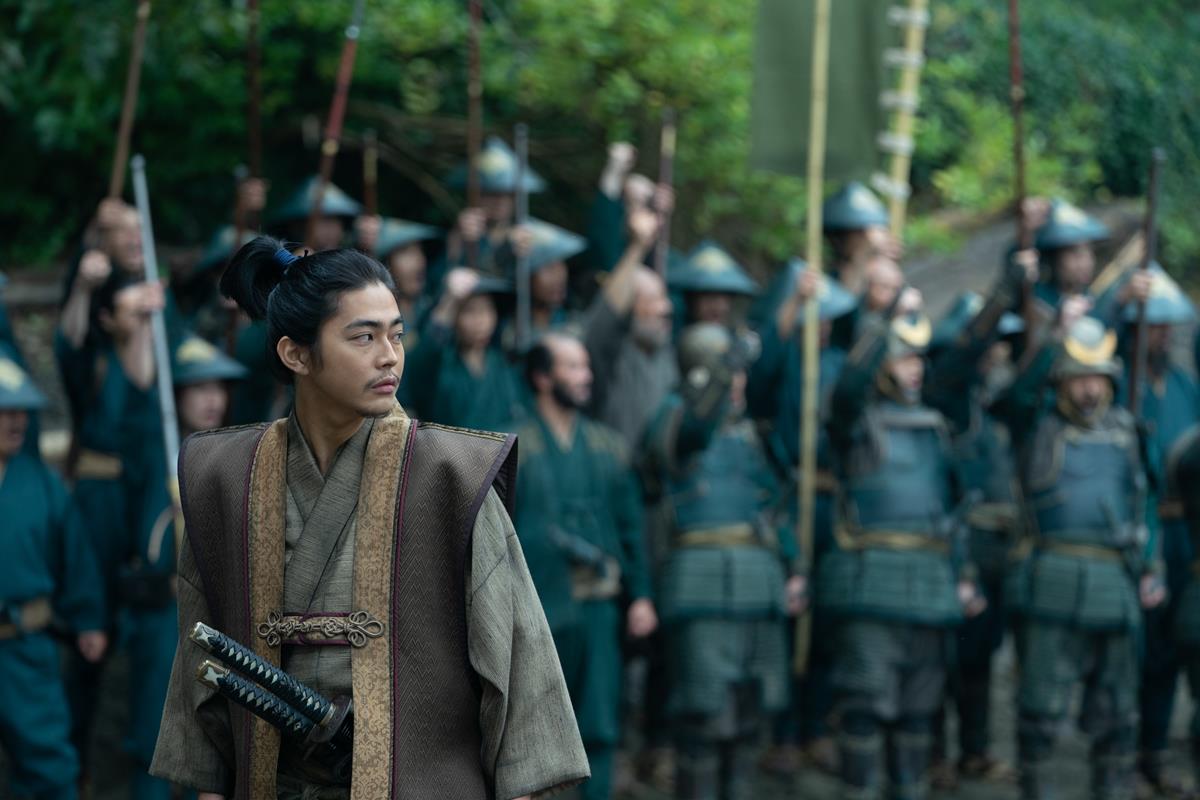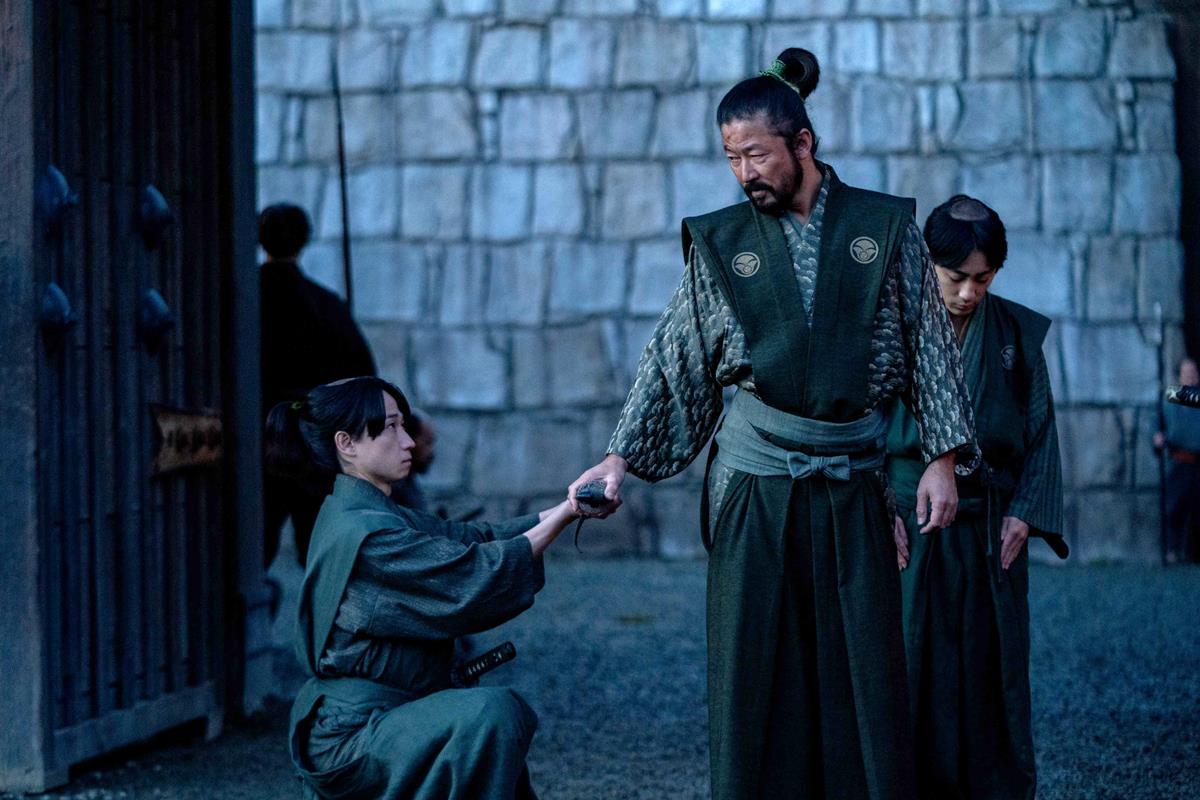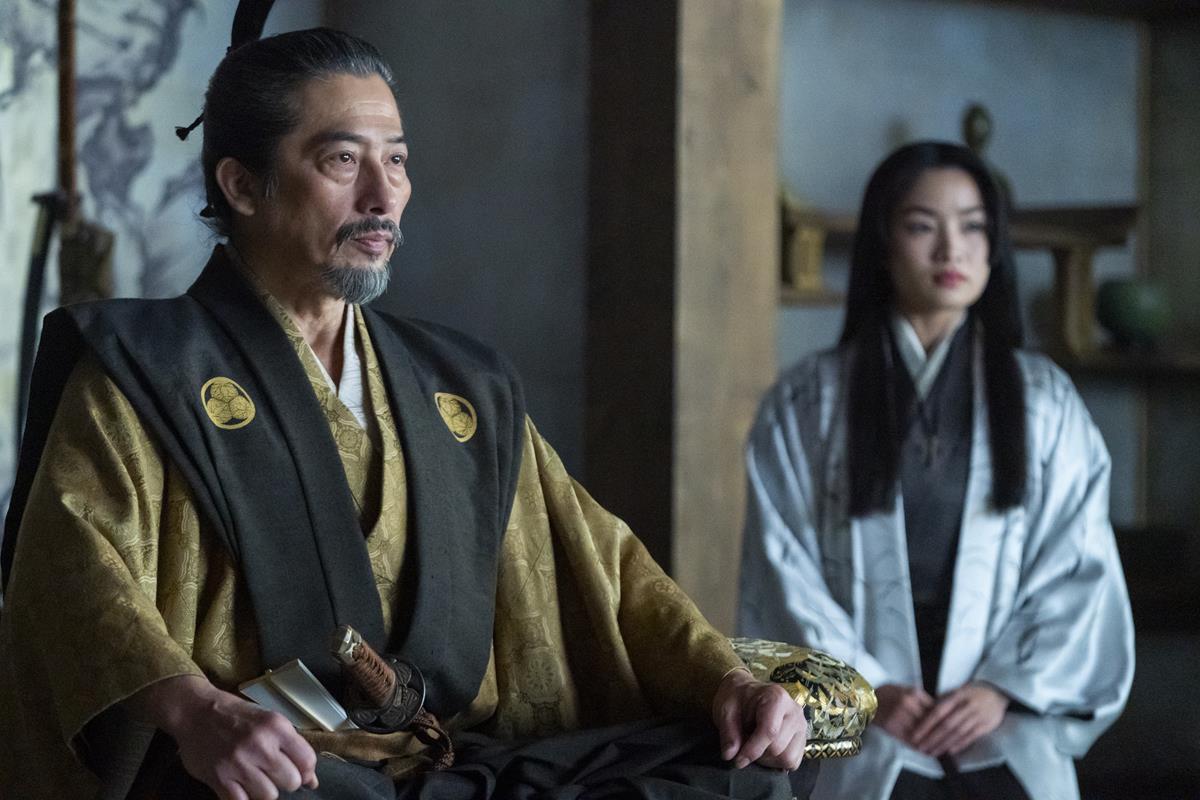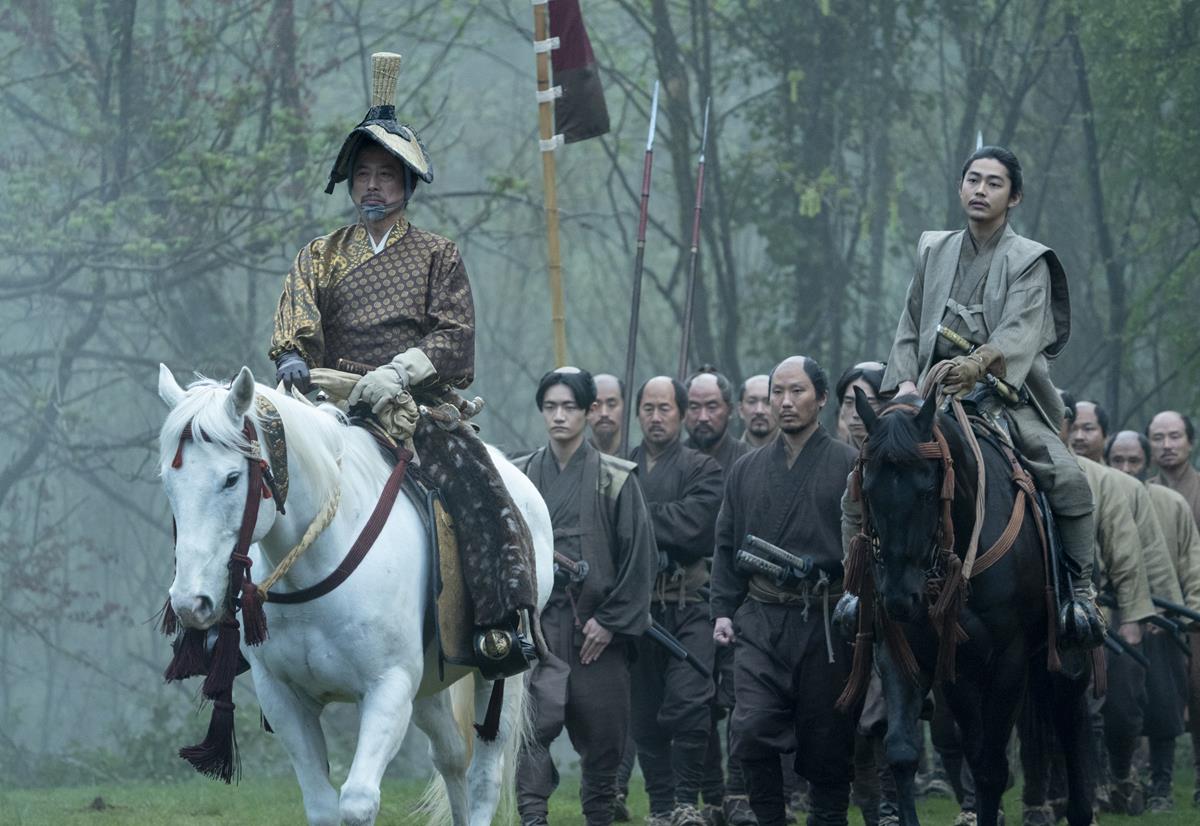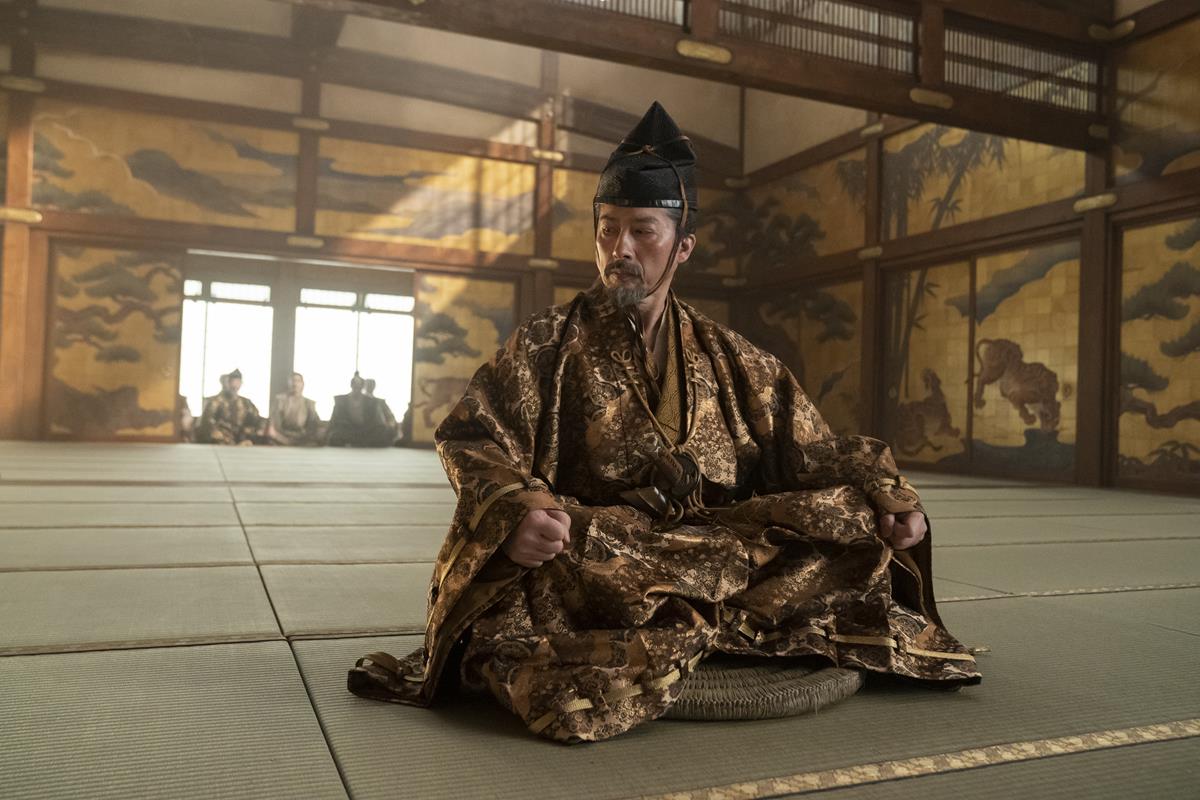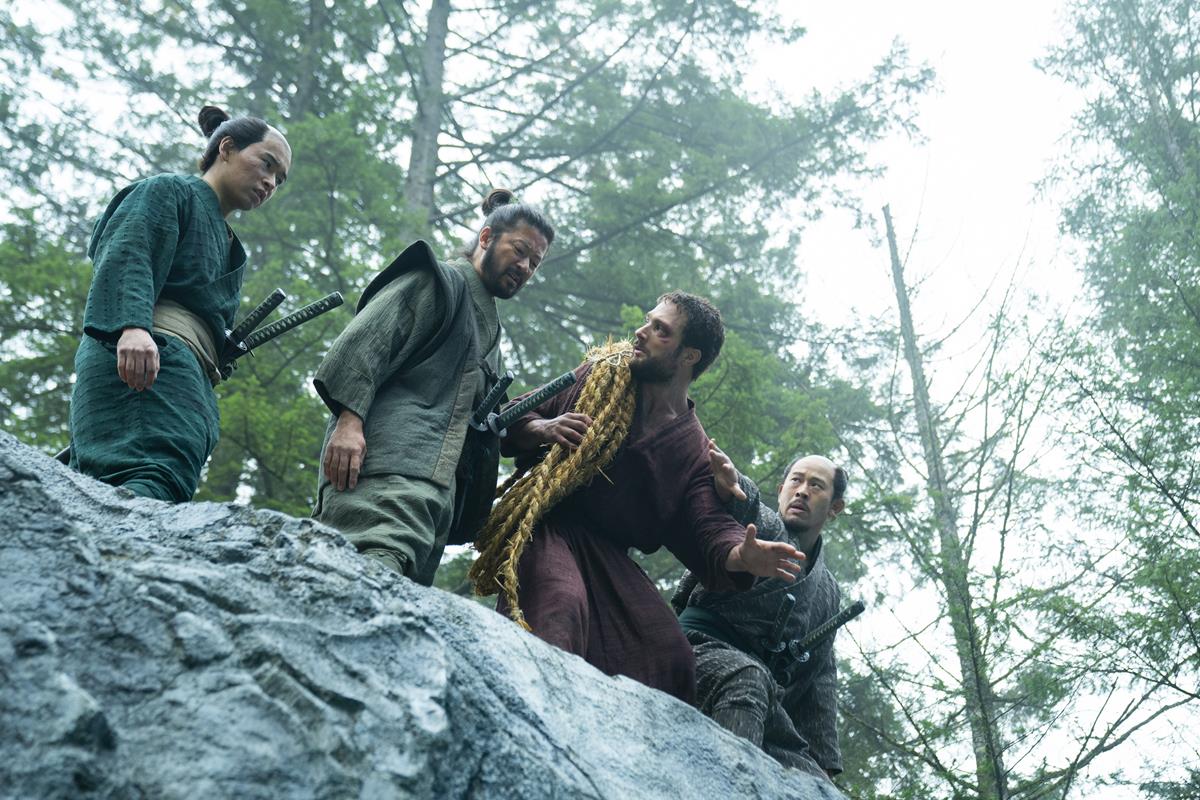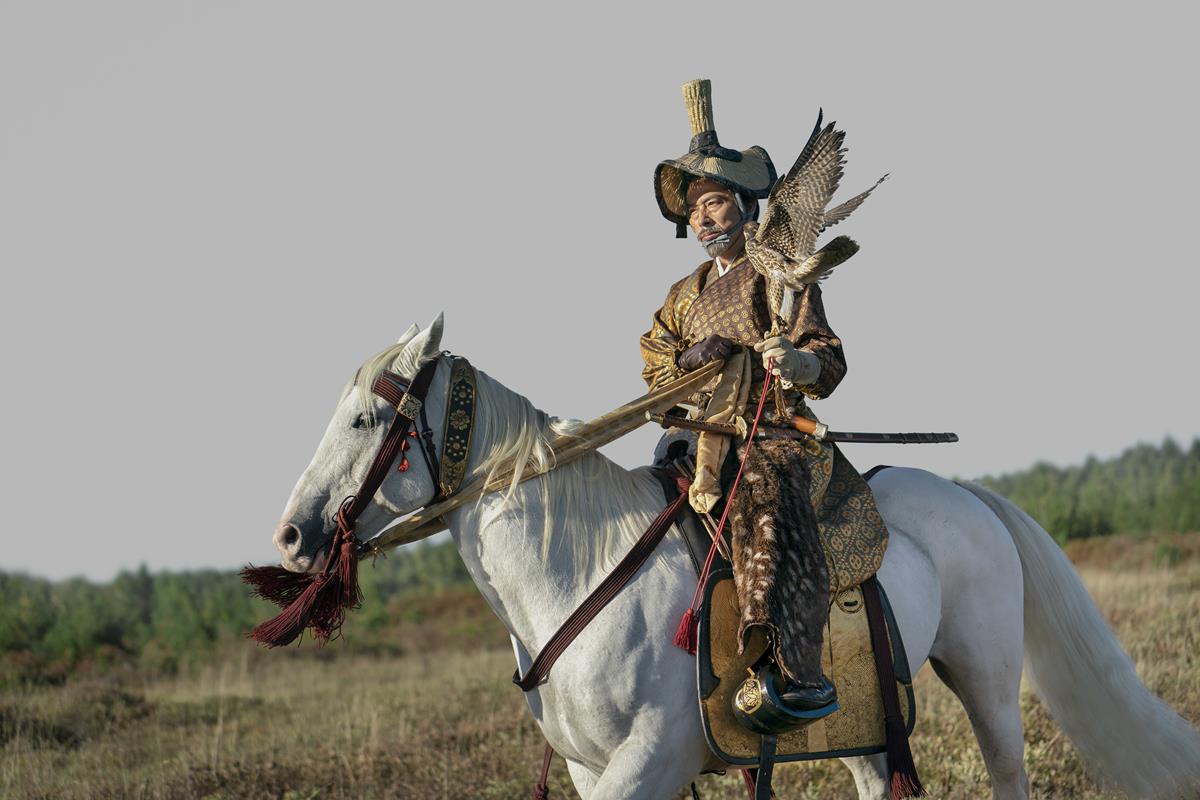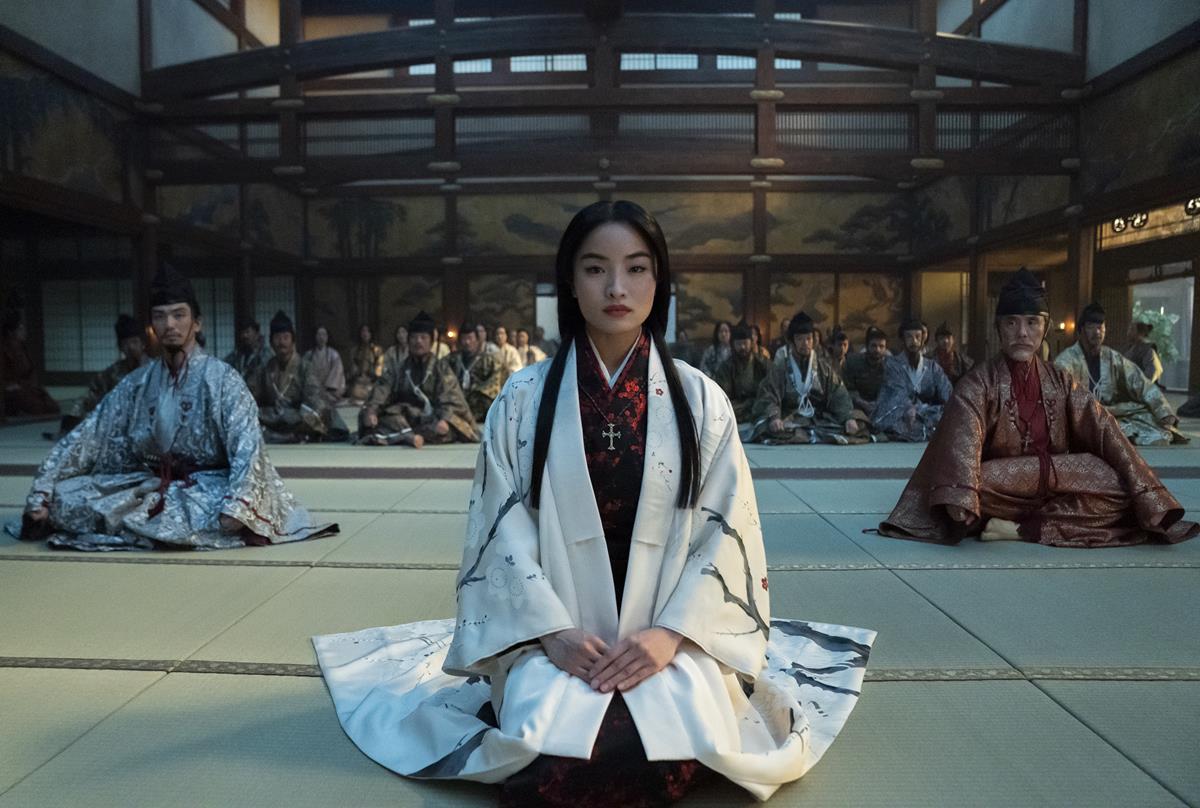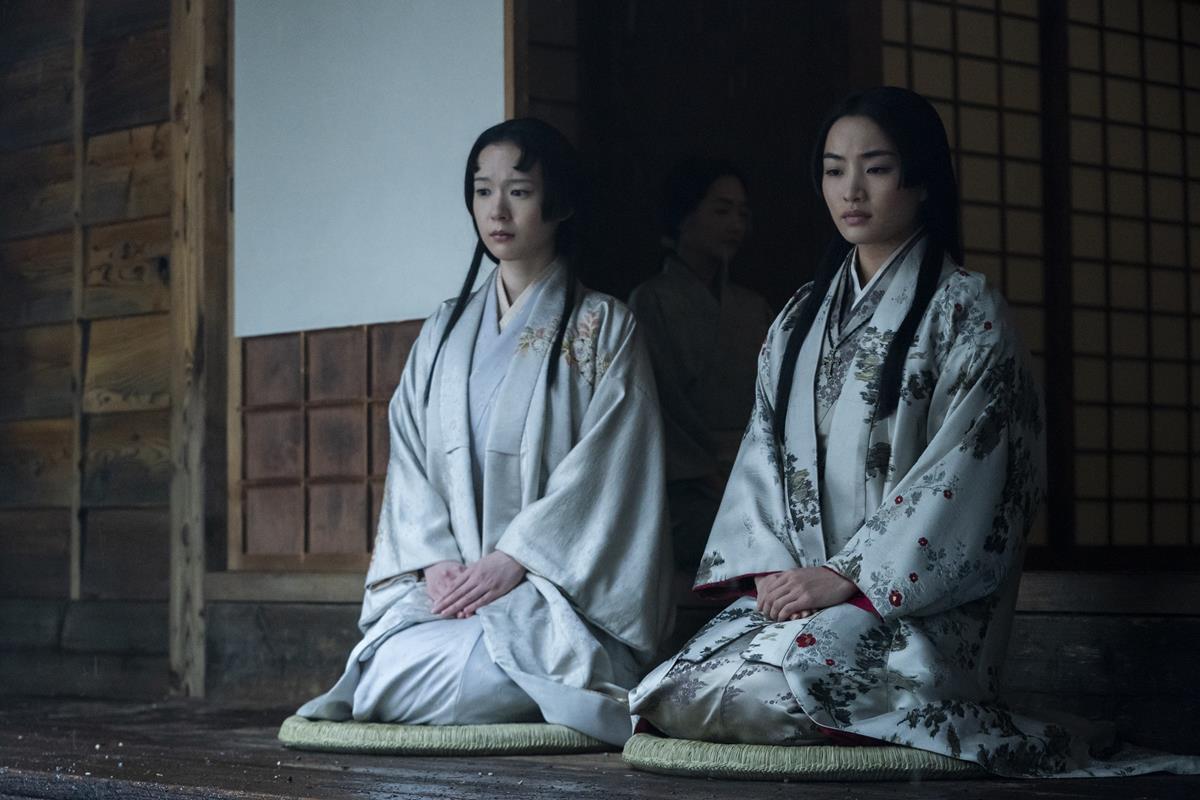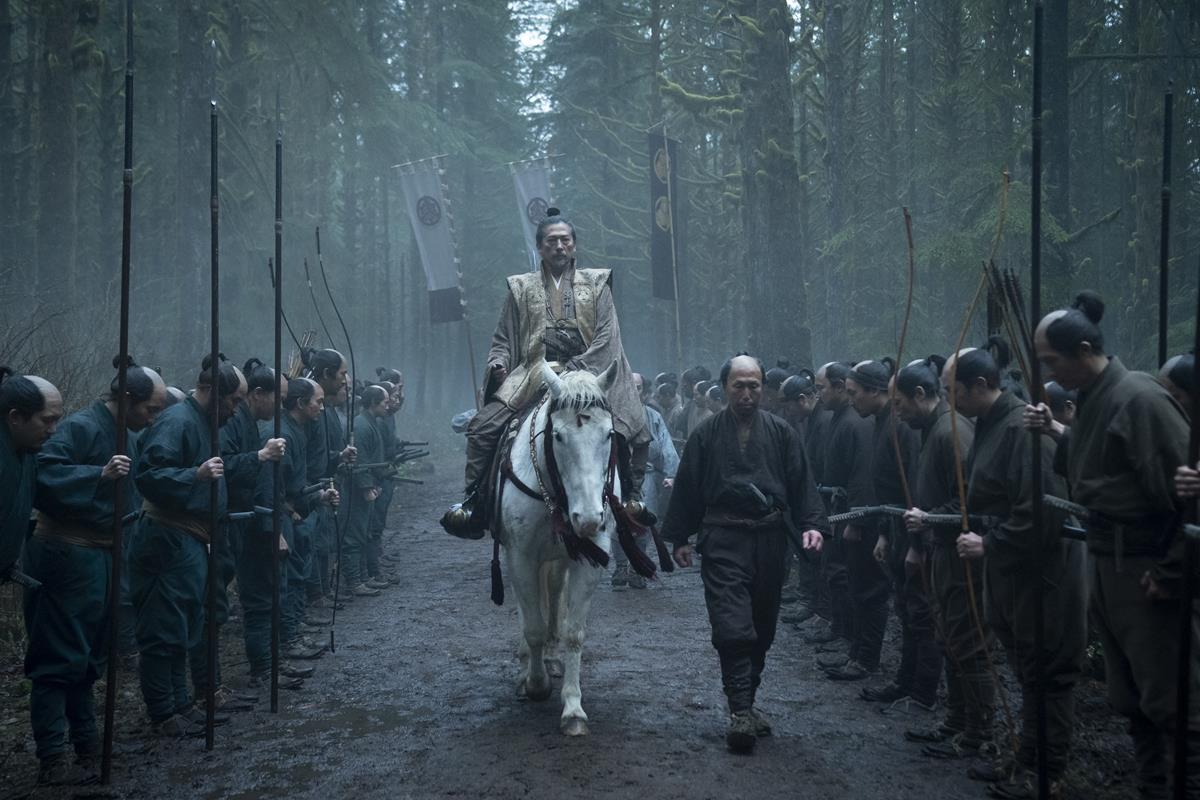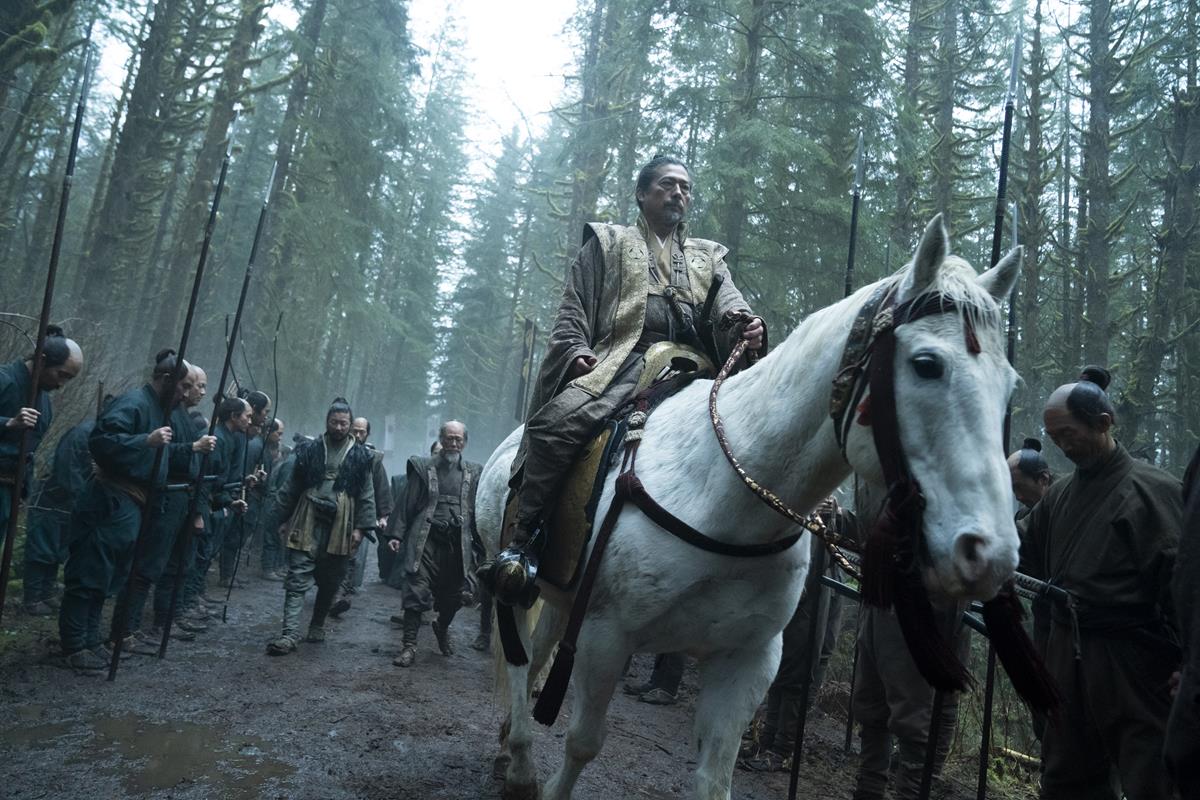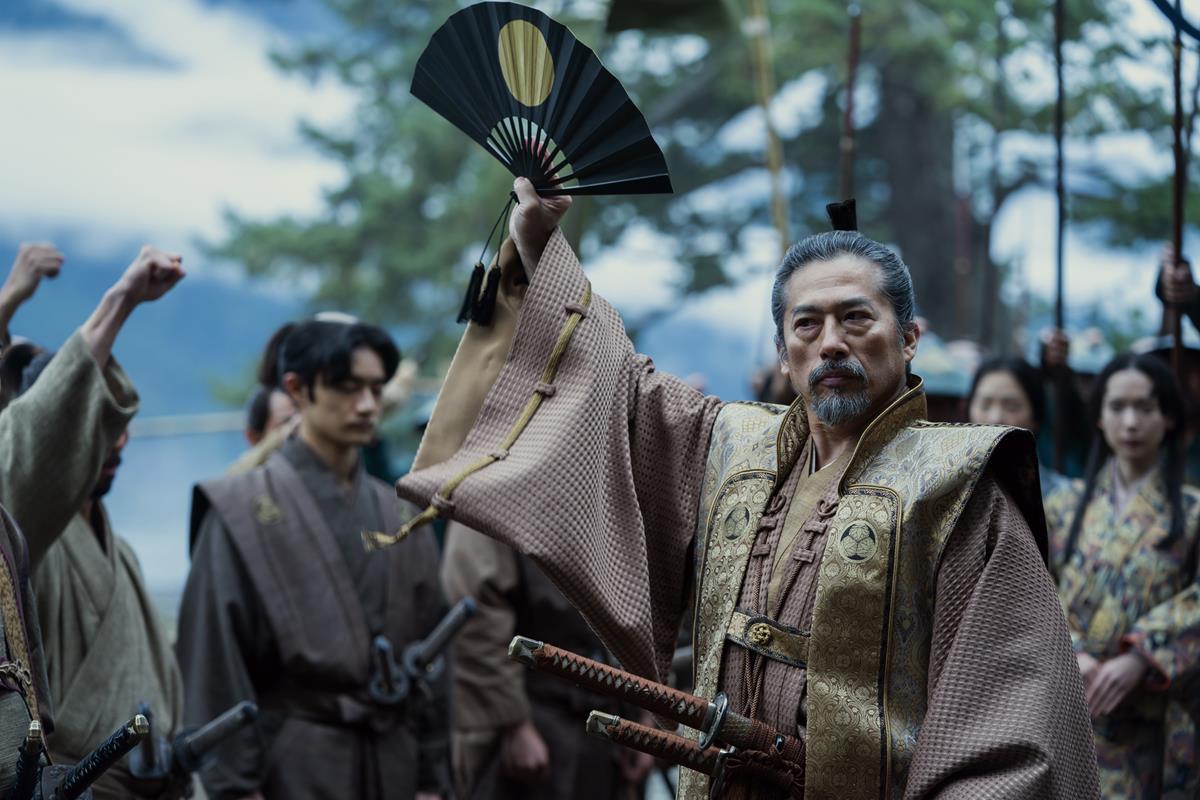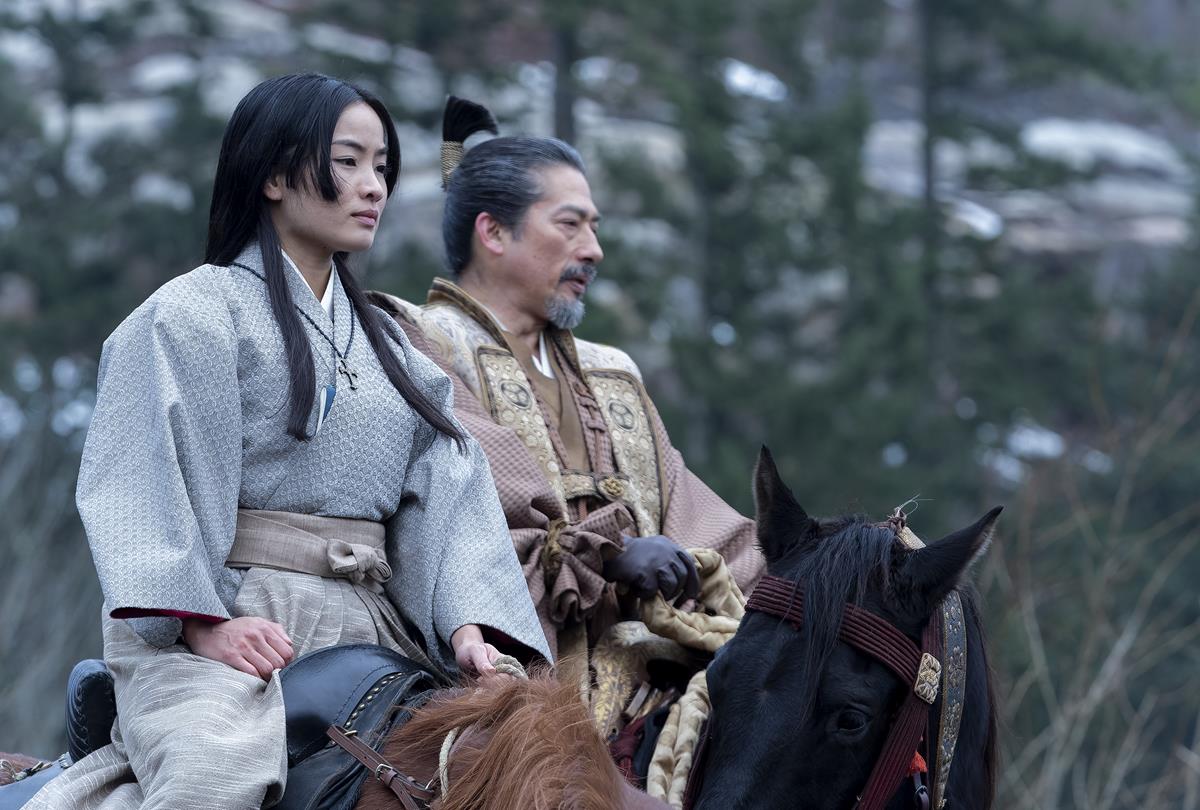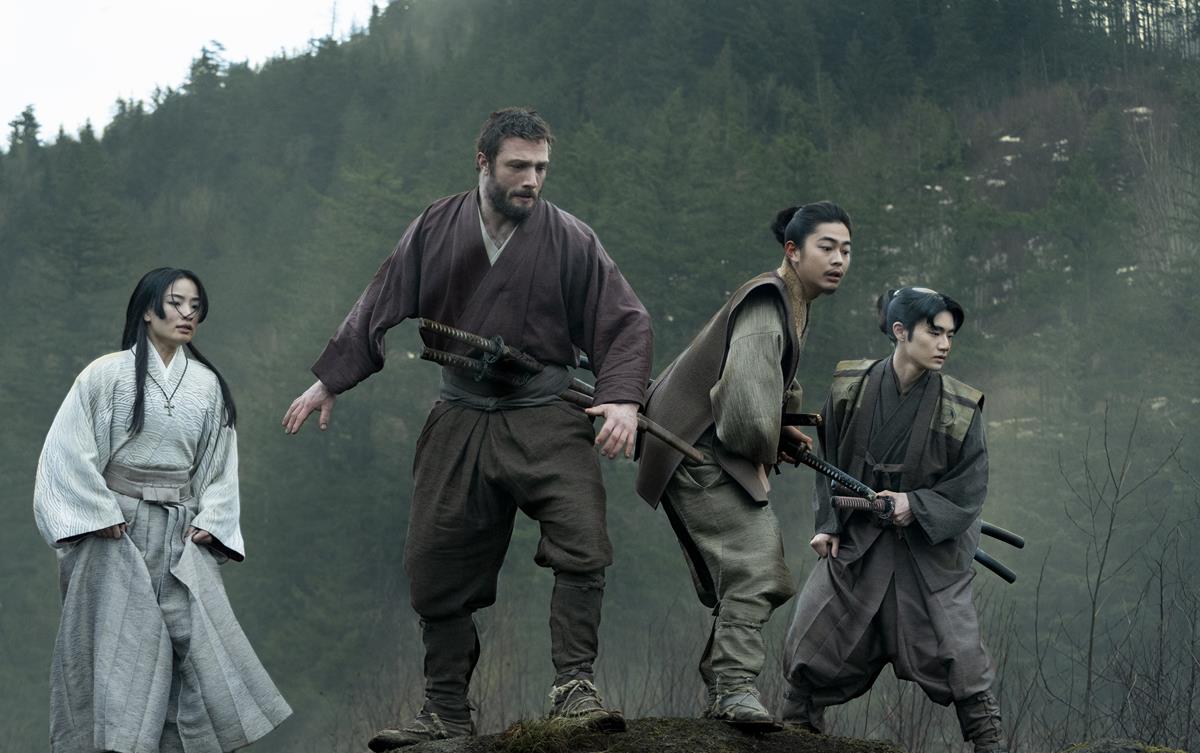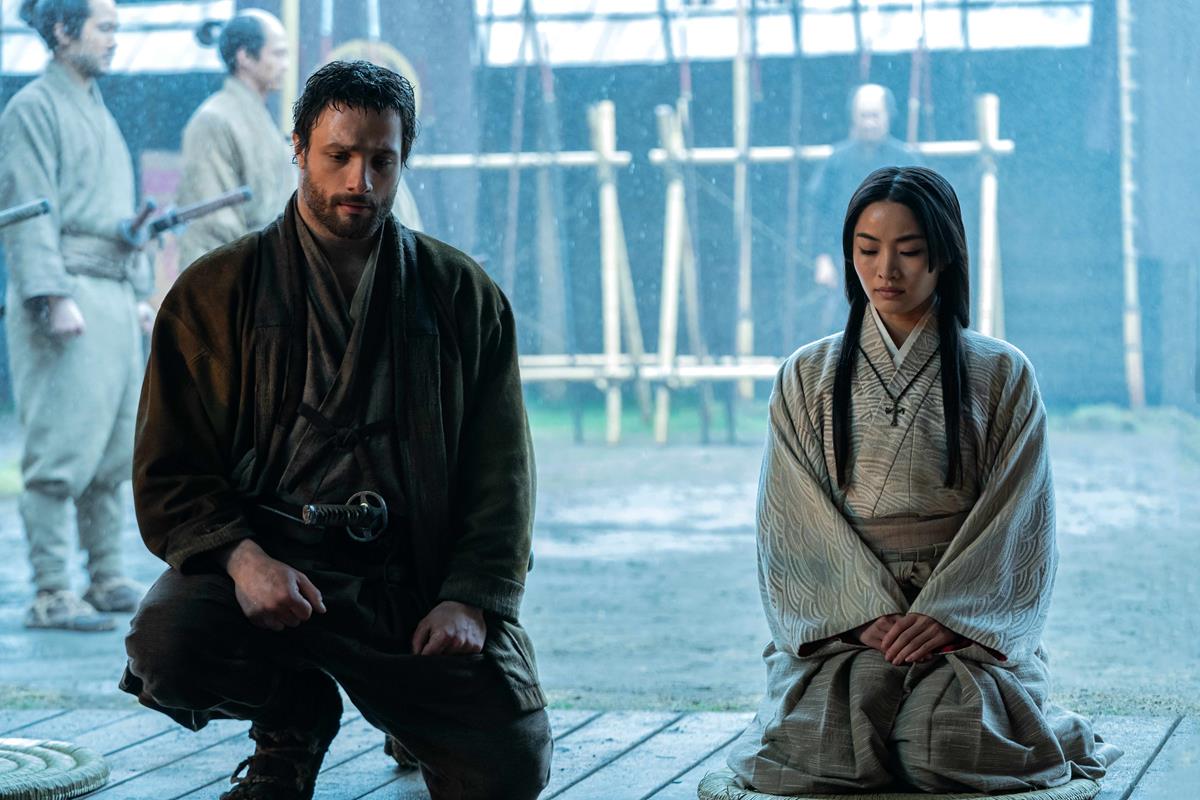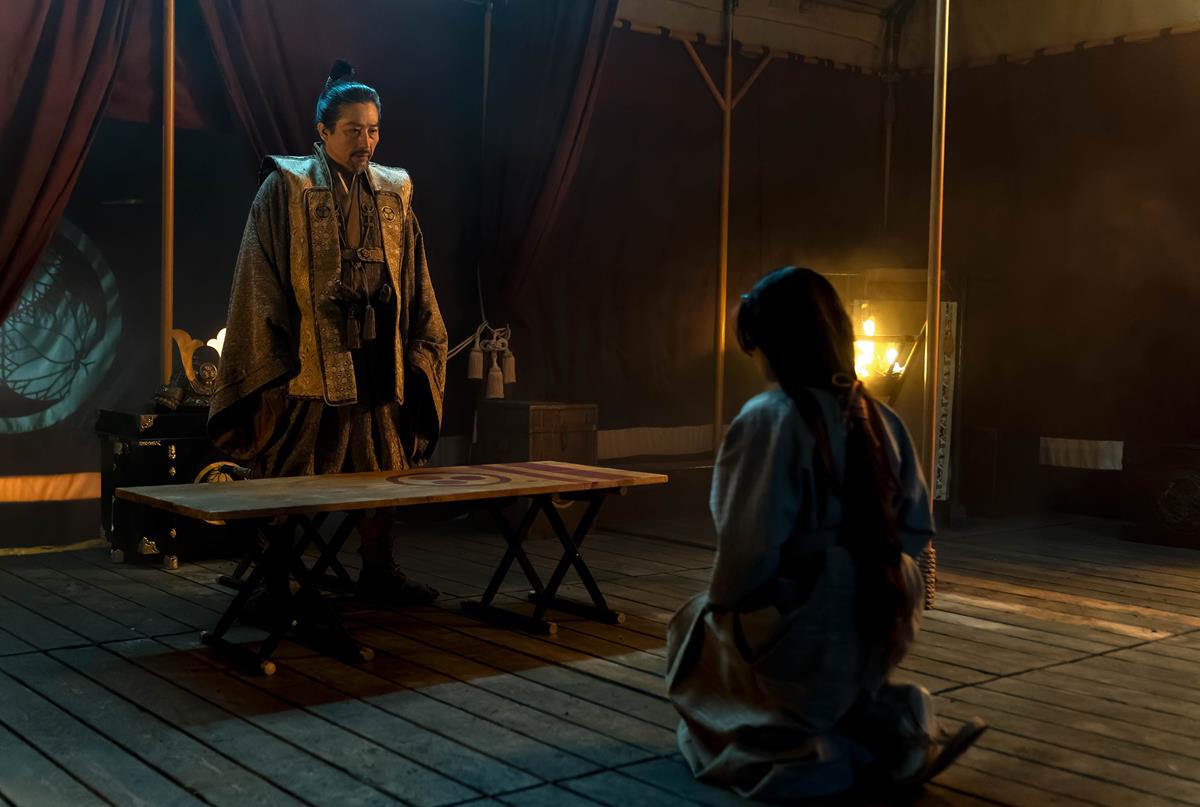
TL;DR
- “Shogun” showrunners Justin Marks and Rachel Kondo detail the painstaking process to re-create feudal Japan, including accurate translations of closed captions.
- The FX show is a hit, and a large part of this appears down to the attention to detail in world building of 17th Century feudal Japan ensuring that historical and cultural accuracy doesn’t get lost in translation.
- Among other things, the showrunners elevated the series’ star, veteran Japanese actor Hiroyuki Sanada, into the dual role of producer to advise on script and scene detail.
“Our strategy was pretty simple: Empower the people who actually know what’s authentic, and then listen to them,” says Rachel Kondo who, with husband Justin Marks, was involved in every aspect of adapting James Clavell’s 1,000-page novel into 10 episodes of TV for FX/Hulu.
“Everyone agreed that the only way to tell the story properly, was to tell (as in the novel) from a full variety of its points of view,” the showrunners explain to Mike DeAngelo at The Playlist podcast. “Which meant that in a story that is in some ways fundamentally about the act of translation, you have to be able to tell it in two different languages. It wouldn’t work any other way.”
Among other things, the duo elevated the series’ star, veteran Japanese actor Hiroyuki Sanada (Avengers: Endgame) into the dual role of producer, which would see him serve as a de facto cultural adviser to the show, assisting with everything from improving the scripts’ Japanese dialogue to casting many of the younger Japanese actors and making sure that traditional costumes were accurate.
The show has proved a critical and commercial hit and a large part of this appears down to the attention to detail in world building of 17th Century feudal Japan ensuring that historical and cultural accuracy doesn’t get lost in translation.
The book has been filmed before as a huge hit miniseries in 1980, a few years after the book itself was published in 1975.
“Generationally, that novel, for us, was the book we all grew up with our parents having on their nightstands,” Marks told The Hollywood Reporter’s Patrick Brzeski. “So many movies and television shows have ripped it off its ‘stranger in a strange land’ archetype. So when FX sent it over, there was a representational side to it that concerned us.”
Marks said he was initially worried that it was a saga that had been seen too many times before, but then he read the book and realized that the story Clavell’s story was still relevant today.
“How do we encounter another culture? How do we encounter ourselves in that process? How do we create a language of curiosity, respect and humility when faced with what we don’t understand?
“All of these things were really impactful to us and now the time was right to adapt it in a way where you put the Japanese language and perspective at the forefront — to get closer to these characters, as opposed to keeping them at arm’s length.”
The 1980 miniseries foregrounded the story of white pirate Blackthorne whereas the original novel revolves around an ensemble of characters. It was this angle coupled with the ‘white savior’ narrative of the first show that Kondo and Marks as well as FX were intrigued to set right in their version. But doing so meant owning up to their own inevitably blinkered cultural perspective.
Marks continues, “All we want to do is find ways to subvert the gaze. We would never be able to properly invert the gaze, because we’re western filmmakers, just like James Clavell was a western writer. What we are hoping to do is to subvert the gaze enough to surprise the audience — like, let’s see Blackthorne as the Japanese see him.”
Another choice was to give greater agency to the story’s female characters, notably Mariko played by Anna Sawai. This was despite the constraints that the period setting forced on them.
Kondo says, “We found that because the female characters’ seem to have constraints — whether gender, or class or their faith system — there was a way to tell the story of how they used their limitations as a form of power. All of their stories deepen in really fascinating ways as they are compelled to translate their limitations into empowerment.”
READ MORE: ‘Shogun’ Bosses Detail “Painstaking Process” to Re-Create Feudal Japan (The Hollywood Reporter)
The process of adapting Shogun to screen with due respect for Japanese culture and historical accuracy led them to create a complex workflow that exchanged ideas and translations back and forth with local experts, actors, co-producers and creatives.
“It often felt like we were building the car while already driving it down the road,” Kondo says of the process that began in the writer’s room and extended into the edit.
“What we wanted to do was to present something that people hadn’t seen before, but that by nature means there is no template,” she told NPR’s Scott Detrow. “And so this process was, I would say, quite chaotic and quite daunting.”
Over the course of translation, from English into Japanese, and from English into period Japanese, “where it almost kind of feels to the Japanese ear maybe more like Shakespeare would feel to the English-speaking ear,” her co-creator added, “there are a thousand nuances that you have to consider.”
Scripts, written in the US by Americans (albeit some were Asian American), were sent to Tokyo for translation. From there, it was sent to a Japanese playwright who specializes in ‘Jidaigeki’ (Japanese period drama, usually set during the Edo period of 1603 to 1868) who put a literary touch to it.
“Then our Japanese producers, Eriko Miyagawa and Hiroyuki Sanada oversaw that moment between taking it from the playwright and giving it to our actors to perform,” Kondo explained to THR. “And they were always discussing the scripts with Justin, asking, “Is this the intention? Is this what we are going for?”
The craziest part was the painstaking process of translating the actor’s Japanese performance back into English subtitles. Details were fought over.
“I’d be like, ‘We should split this sentence here.’ And she’d be saying, ‘No, it flows better if we keep it together,’” Marks relates. “And then, I’d be like, ‘No, we need an em dash.’ And then we’d watch it 100 more times. And then I’d say, ‘OK, yeah, you were right. Let’s just leave it.’ So many obsessive conversations like this.”
They chose to position the subtitles higher up on the screen than you would normally see with closed captioning. This brought them closer to the eye line and was intended to reduce the audience fatigue. They were also fastidious with the color timing behind the subtitles, to make sure that the words were always “jumping off the screen and you don’t get that white-on-white problem that we all remember from watching classic foreign films in black and white during our college days,” Marks explains.
The show’s Japanese actors, notably Sanada, advised on details such as whether costume kimonos were tied appropriately while history advisors on the project ensured that the many scenes of rituals – including seating positions and bowing – were accurate.
There were two sides to this. Kondo and Marks felt they had to enable their Japanese collaborators to speak up “and speak outside of the traditional hierarchy when they noticed something was wrong” (which is not natural to many Japanese) whilst ensuring that the crew on set in Vancouver (home of the show’s soundstages and some exterior locations) were open to hearing suggestions and willing to respond to it.
A historian of Japan marks Shogun’s card. Writing for The Conversation, University of Maryland professor Constantine Nomikos Vaporis says that while the original 1980 series reflects both the confidence of postwar America “and its fascination with its resurgent former enemy,” it was highly unpopular among Japanese viewers.
“FX’s remake demonstrates [that] American viewers today apparently don’t need to be slowly introduced to Japanese culture by a European guide,” and that the series does a far better job at cleaving to Clavell’s narrative in which Blackthorne comes to see Japan as far more civilized than the West.
“Of course, authenticity has its limits,” the historian notes. “The producers of both television series decided to adhere closely to the original novel. In doing so, they’re perhaps unwittingly reproducing certain stereotypes about Japan.
“Most strikingly, there’s the fetishization of death, as several characters have a penchant for violence and sadism, while many others commit ritual suicide, or seppuku.”
READ MORE: James Clavell’s ‘Shōgun’ is reimagined for a new generation of TV viewers (The Conversation)

Why subscribe to The Angle?
Exclusive Insights: Get editorial roundups of the cutting-edge content that matters most.
Behind-the-Scenes Access: Peek behind the curtain with in-depth Q&As featuring industry experts and thought leaders.
Unparalleled Access: NAB Amplify is your digital hub for technology, trends, and insights unavailable anywhere else.
Join a community of professionals who are as passionate about the future of film, television, and digital storytelling as you are. Subscribe to The Angle today!


